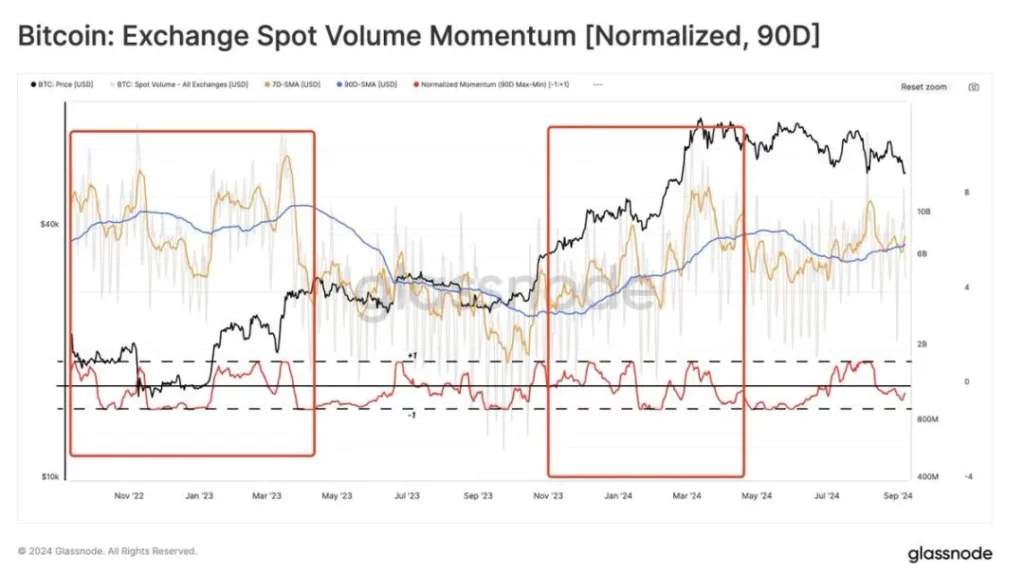Is the Crypto Market Really in a Bull Market?

The latest Bitcoin on-chain transaction volume chart from Glassnode’s weekly report is quite misleading. The structure of the 30-day Simple Moving Average (SMA) of transaction volume from October 2023 to the present bears a strong resemblance to that from October 2020 to September 2021. This similarity might lead some market participants to conclude that “we are already in a super bull market and it’s already halfway through.”

However, the misleading aspect of this chart lies in the fact that the structure of transaction volume used for comparison has undergone significant changes. Since 2023, Taproot Witness transactions related to inscriptions and runes have grown rapidly, at their peak accounting for 41.8% of transaction volume—a phenomenon that did not occur in the previous cycle.

This point can also be verified by examining the changes in Bitcoin miner fees. Excluding the impact of the inscription/rune boom period, the baseline level of miner fees since 2023 is entirely incomparable to the bull market from March 2020 to July 2021; it’s only slightly higher than during the bear market in 2022.

Therefore, the so-called “bull market” we experienced from October 2023 to March 2024 is not a genuine super bull market. Instead, it’s a market composed of two seasonal trends (an autumn rally and a spring rally) combined with a surge in new asset issuances.

The trend in exchange spot trading volumes from November 2022 to the present also confirms this point. As shown in the chart, there are only seasonal fluctuations without any upward trend.
To sum up, the myth that “halving leads to a bull market every four years” has been debunked this year. The reason this myth persisted is that Bitcoin’s halving cycle has always closely coincided with the Federal Reserve’s monetary cycle. Since Bitcoin was born during the subprime mortgage crisis, each four-year halving happened to occur at the end of the Fed’s rate-cutting cycle, during the recovery phase of the Merrill Lynch clock.
However, in this cycle, due to the Federal Reserve’s monetary cycle being delayed by a year, although 2024 is a halving year, there’s only seasonal market activity and no super bull market. Nevertheless, there’s no need to be pessimistic about this; the absence of a super bull market in 2024 implies that a super bull market is likely to arrive in 2025–2026.
Related Reading: Is the BTC Halving Cycle Still Effective?